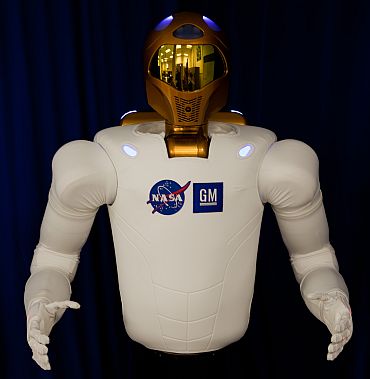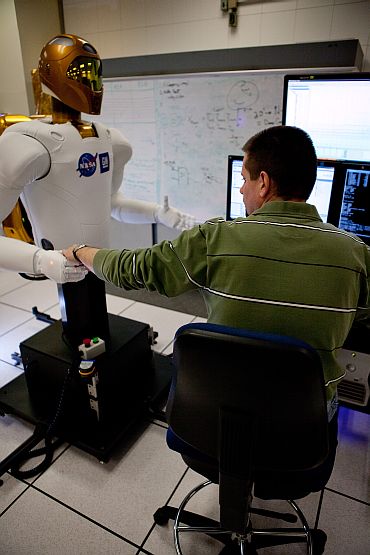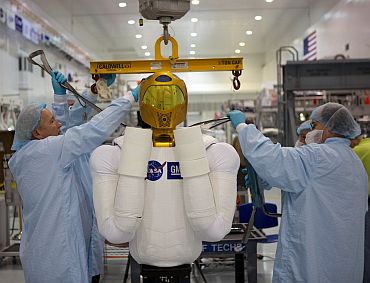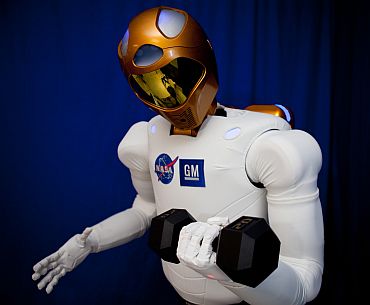This article was first published 15 years ago
Home »
News » Robonaut 2: The robot who will fly to space
Robonaut 2: The robot who will fly to space
Last updated on: November 1, 2010 14:10 IST
Photographs: Courtesy NASA
NASA is preparing to launch Robonaut 2, the first human-like robot designed for use in space.
The humanoid robot, which resembles the torso, head and shoulders of a person, was designed by NASA and General Motors to work alongside astronauts to complete chores and repairs aboard the International Space Station.
Click on NEXT to see more photos of Robonaut 2...
Once aboard the space station, it will be tested to be sure it works as expected in the zero gravity environment, and later will be tested on other tasks including handling flexible fabrics and possibly helping out with some light housework.
"From the very beginning, the idea was the robot had to be capable enough to do the work but at the same time be safe and trusted to do that work right next to humans,"
Fox News quoted Rob Ambrose at NASA's Johnson Space Centre in Houston, as saying.
In addition to its human-like fingers, the machine has soft palms that can grasp and envelop objects.
It is also a "soft" robot, Ambrose said. It is also padded all over to prevent nicks and scratches.
Robonaut 2 also has safety sensors -- if it feels an unexpected object (like an astronaut's head) in its way, it is programmed to stop its movement. Or, if something hits Robonaut 2 with enough force, the robot will immediately shut down.
Two potential uses the team would like to start testing include having the robot wipe down handrails and vacuum air filters -- two tedious tasks that station astronauts are currently required to complete.
The launch "might be just a single step for this robot," Ambrose said.
One advantage of a humanoid design is that Robonaut can take over simple, repetitive, or especially dangerous tasks on places such as the International Space Station. Because R2 is approaching human dexterity, tasks such as changing out an air filter can be performed without modifications to the existing design.
Advanced technology spans the entire R2 system and includes: optimised overlapping dual arm dexterous workspace, series elastic joint technology, extended finger and thumb travel, miniaturized 6-axis load cells, redundant force sensing, ultra-high speed joint controllers, extreme neck travel, and high resolution camera and IR systems.
Robonaut 2 or R2, will launch to the International Space Station on space shuttle Discovery as part of the STS-133 mission, it will become the first dexterous humanoid robot in space, and the first US-built robot at the space station. But that will be just one small step for a robot and one giant leap for robot-kind.
Initially R2 will be deployed on a fixed pedestal inside the ISS. Next steps include a leg for climbing through the corridors of the Space Station, upgrades for R2 to go outside into the vacuum of space, and then future lower bodies like legs and wheels to propel the R2 across Lunar and Martian terrain.
A four-wheeled rover called Centaur 2 is being evaluated at the 2010 Desert Field Test in Arizona as an example of these future lower bodies for R2.
Really, a giant leap forward for a tin man!









